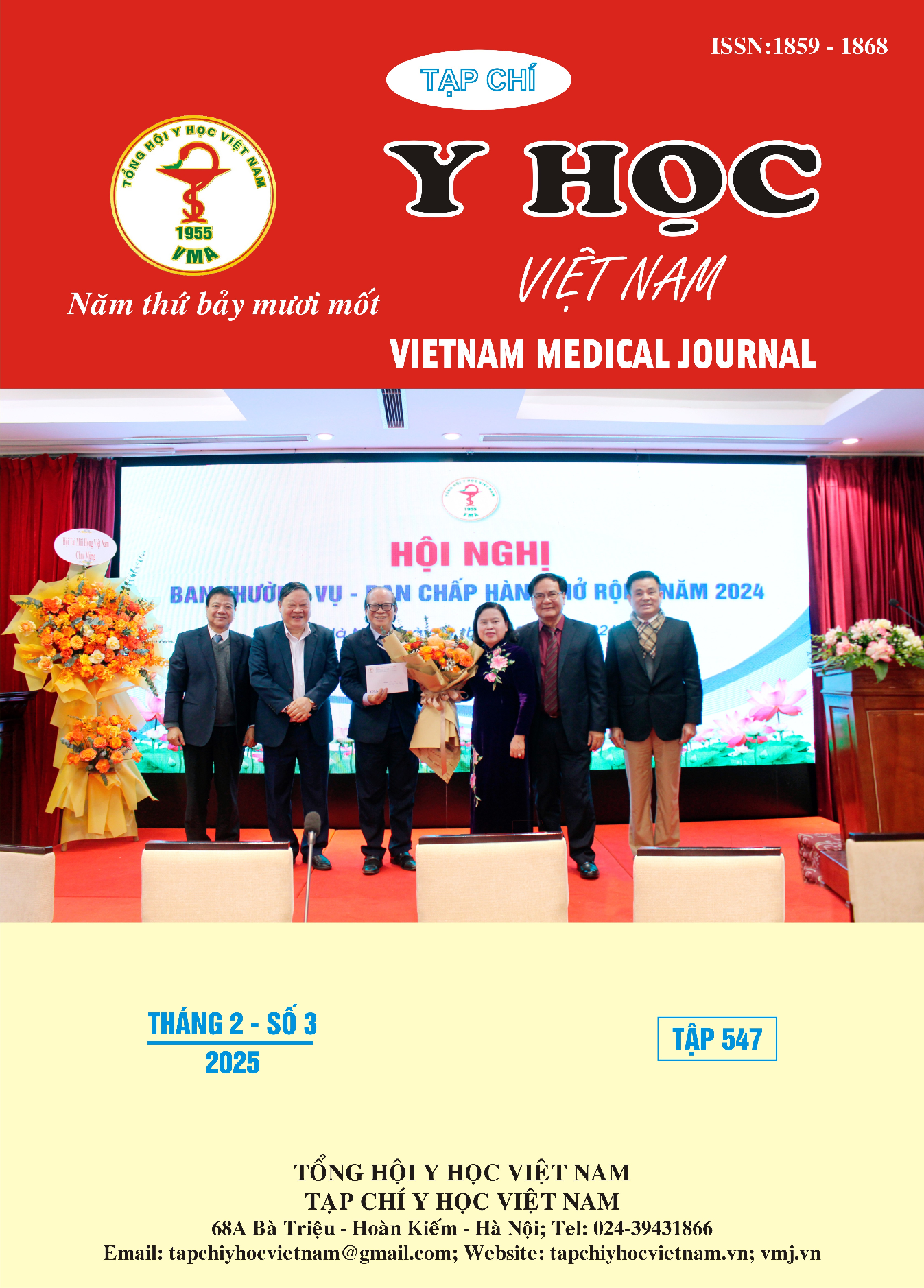COMPARISON OF PATHOGEN DETECTION IN RESPIRATORY SPECIMENS BETWEEN CONVENTIONAL SPUTUM COLLECTION AND INDUCED SPUTUM COLLECTION TECHNIQUES IN HIV/AIDS PATIENTS WITH PNEUMONIA
Main Article Content
Abstract
Background: Pneumonia is a leading cause of hospital admissions and deaths among patients with HIV. Determining the causative agent is crucial for providing targeted treatment. Using the induced sputum method to collect sputum or respiratory secretions from pneumonia patients can assist in identifying the responsible pathogen. Objective: To describe the detection rate and compare the effectiveness of conventional sputum collection and induced sputum collection techniques for identifying pathogens in respiratory specimens from HIV/AIDS patients with pneumonia. Methods: A cross-sectional study was conducted on 96 HIV/AIDS inpatients with pneumonia at the Infection Department E of the Hospital for Tropical Diseases from January to June 2020. The study compared the ability to isolate the pathogen between conventional sputum collection and induced sputum collection techniques using the McNemar test, with a statistical significance threshold of p < 0.05. Results: The agents detected in the respiratory fluids of patients were Pneumocystis jirovecii P.jirovecii (50.0%), bacteria (47.9%), Mycobacterium tuberculosis (36.5%), and fungi (18.8%), respectively. There was no difference between the detection rate of P.jirovecii, the rate of positive AFB smear, the rate of culturing Mycobacterium tuberculosis, the rate of collecting standard sputum samples and the rate of positive bacterial cultures between conventional sputum collection and induced sputum collection techniques (p > 0.05). Conclusion: The agent found in respiratory specimens with the highest rate is P.jirovecii, followed by bacteria, Mycobacterium tuberculosis and fungi. There is no difference in the ability to detect all pathogens in respiratory specimens between conventional sputum collection and induced sputum collection techniques. Therefore, in HIV patients who cannot expectorate normal sputum, aerosol induction can be used to collect induced sputum. This induced sputum sample is as valuable as a normal sputum sample in detecting pathogens.
Article Details
Keywords
pneumonia, HIV, conventional sputum, induced sputum
References
2. Centers for Disease Control and Prevention, National Institutes of Health, HIV Medicine Association, of the Infectious Diseases Society of America. Guidelines for Prevention and Treatment of Opportunistic Infections in HIV-Infected Adults and Adolescents with HIV. Published online 2019.
3. Hùng LM. Viêm phổi nhiễm trùng trên người nhiễm HIV/AIDS nhập viện tai thành phố Hồ Chí Minh. Đại học Y Dược TPHCM. Published online 2008.
4. Bộ Y tế. Hướng dẫn quy trình kĩ thuật Nội khoa, chuyên ngành Hô hấp. Published online 2014.
5. Báo cáo công tác phòng, chống HIV/AIDS năm 2019 va nhiệm vụ trọng tâm năm 2020, Hà Nội. Published online 2019.
6. Choe PG, Kang YM, Kim G. Diagnostic value of direct fluorescence antibody staining for detecting Pneumocystis jirovecii in expectorated sputum from patients with HIV infection. Medical Mycology. 2014;52(3):326-330.
7. Biswas S, Das A, Sinha A, Das SK, Bairagya TD. The role of induced sputum in the diagnosis of pulmonary tuberculosis. Lung India : official organ of Indian Chest Society. 2013;30(3):199-202.
8. Chuard C, Fracheboud D, Regamey C. Effect of sputum induction by hypertonic saline on specimen quality. Diagn Microbiol Infect Dis. 2001;39(4):211-214.


